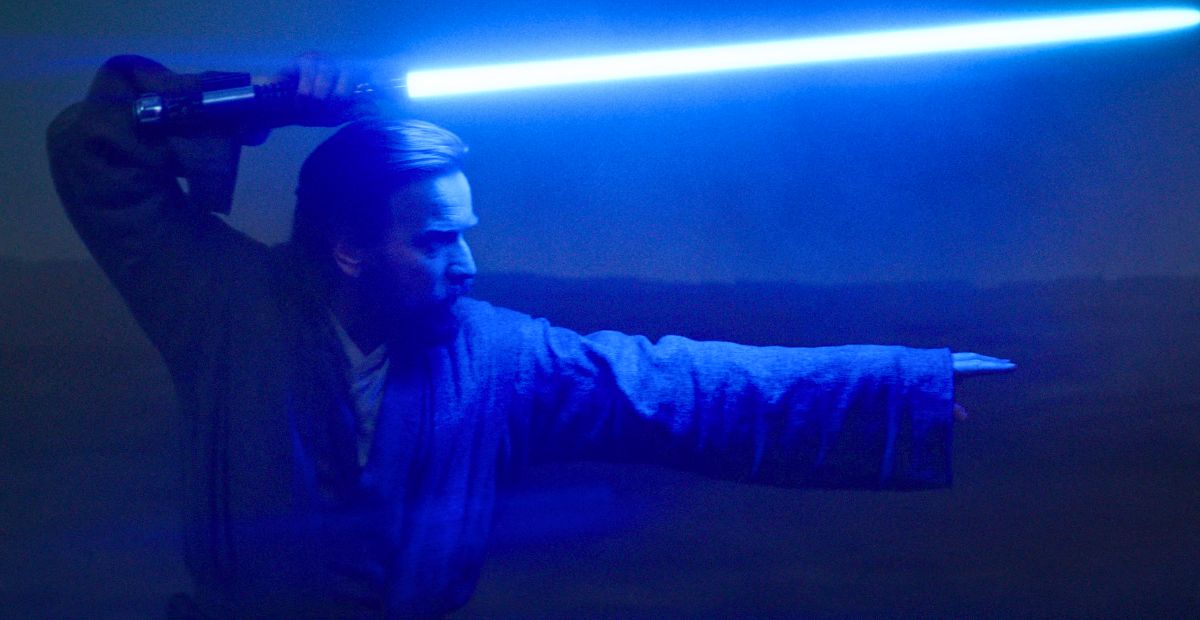Who understands the Jedi Order better than the fans, right? Ask any of us and we can tell you exactly how fast Yoda moved, how powerful Mace Windu’s Vaapad was, or how Anakin fought like a battering ram.
But there’s one Jedi who gets talked about a little differently—Obi-Wan Kenobi. He wasn’t the fastest or the strongest, but somehow, he kept surviving, even against impossible odds. What really made Obi-Wan stand out was his defensive style. But here’s something you might not have noticed: when he fought Darth Maul, Obi-Wan was clearly using Form IV—Ataru. Yet after that moment, we see a complete shift. He abandoned the flashy moves and fully committed himself to Soresu, the defensive Form III.
So why did Obi-Wan make that change? And why did he master it so completely?
Why Obi-Wan Was the Jedi Order’s Master of Soresu
The first reason Obi-Wan is considered the best defensive lightsaber duelist in the Jedi Order goes all the way back to the loss of his master, Qui-Gon Jinn.
If you think back to The Phantom Menace, during the duel on Naboo, both Obi-Wan and Qui-Gon are clearly using Form IV—Ataru. It’s a fast, aggressive form, full of acrobatics and heavy strikes. Qui-Gon was highly trained in it, and as his Padawan, Obi-Wan naturally followed his lead. But after witnessing his master fall to Darth Maul, something changed.
Obi-Wan saw firsthand that speed and aggression weren’t always enough, especially when facing a Sith trained to exploit weaknesses. That moment shaped the rest of his fighting philosophy.
According to Star Wars Insider magazine, issue #62:
“Obi-Wan Kenobi takes up a dedication to Form III after the death of Qui-Gon Jinn (who favored in Form IV), since it was apparent to Kenobi that Jinn’s defense was insufficient against the Sith techniques of Darth Maul.”

From that point on, Obi-Wan committed himself to mastering Soresu—Form III. It was the polar opposite of Ataru. Instead of leaping into danger, it focused on endurance, defense, and survival. It wasn’t about dominating the fight—it was about staying alive long enough for your opponent to make a mistake.
And maybe, beyond the technical decision, something deeper changed in Obi-Wan after Qui-Gon’s death. Watching his master die, someone he trusted and admired, might’ve triggered something in him. Maybe that loss made him want to fight in a way that could protect the people he cared about. If aggression and flashiness couldn’t save Qui-Gon, then maybe a more grounded, defensive style could help him keep others safe in the future. In a way, Soresu wasn’t just a technique; it became part of Obi-Wan’s identity as a guardian.
And from all of this, we can clearly see how Obi-Wan dedicated himself to becoming a true master of defense—not just with a lightsaber, but in how he handled every fight during the Clone Wars, and even in moments when he was completely unarmed.
One of the best examples of this is in The Mandalore Plot episode from The Clone Wars, where Obi-Wan goes up against Pre Vizsla.
Obi-Wan’s Defensive Style Was Respected by Jedi and Feared by His Enemies
Now that we know why Obi-Wan made the shift to Soresu after Qui-Gon’s death, we can really see how deeply he committed to it. He didn’t just adopt Form III, he devoted himself to mastering it. And that dedication paid off. Jedi Masters respected it. His enemies feared it. Obi-Wan’s defense became more than just a fighting style—it became part of his legend.
To really understand how powerful his defensive style became, we can turn to Revenge of the Sith: The Novelization by Matthew Stover. It’s not canon, but it gives us a deeper perspective—one we don’t get to see on-screen.
During the duel aboard the Invisible Hand, when Obi-Wan and Anakin face off against Count Dooku to rescue Chancellor Palpatine, Dooku quickly realizes how far Obi-Wan has come. This time, Obi-Wan’s defense isn’t just impressive—it’s impenetrable.
“It was so clear in Dooku’s mind that he almost failed to notice that Kenobi met every one of his thrusts without so much as moving his feet, staying perfectly centered, perfectly balanced, blade never moving a millimeter more than was necessary, deflecting without effort, riposting with flickering strikes and stances swifter than the tongue of a Garollian ghost viper… he finally registered the source of that blinding defensive velocity Kenobi had used a moment ago, and only then, belatedly, did he understand that Kenobi’s Ataru and Shii-Cho had been ploys, as well. Kenobi had become a master of Soresu.”

And it wasn’t just enemies who took notice.
In that same novel, there’s a great moment between Obi-Wan and Mace Windu. They talk about lightsaber styles, not just as techniques, but as answers to personal flaws. That’s when Mace Windu says something that really stands out:
“I created Vaapad to answer my weakness: it channels my own darkness into a weapon of the light. Master Yoda’s Ataru is also an answer to weakness: the limitations of reach and mobility imposed by his stature and his age. But for you? What weakness does Soresu answer?”

Obi-Wan, caught off guard, admits he never really thought about it that way.
“That is so like you, Master Kenobi,” the Korun Master had said, shaking his head. “I am called a great swordsman because I invented a lethal style; but who is greater, the creator of a killing form—or the master of the classic form?”
That one line sums up Obi-Wan’s quiet greatness. He didn’t invent anything new. He didn’t rely on power or aggression. He mastered the basics so thoroughly that they became untouchable.
And that’s exactly what made him one of the most respected and most dangerous Jedi of his time.

